Technology trend predictions for 2014

Ireland's leading retail technology suppliers and outline their forecasts for the major technology trends over the coming year
21 January 2014

Traditionally a period for New Year resolutions and self-improvement, January is the ideal time for retailers to reflect on the past year and investigate whether new retail technology solutions could boost both their service levels and bottom line. With that in mind, we decided to ask the country’s leading retail tech experts: "Which technology trend will impact the retail industry most significantly in 2014 and why?"
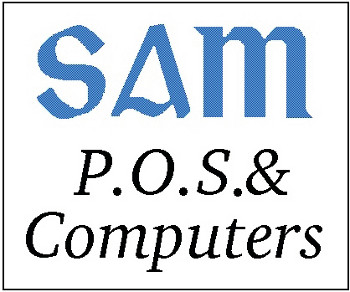
‘Retailers will only invest where they will get a strong return’
Adrian Devine, managing director, Leaders Enterprises Ltd
Leaders Enterprises Ltd is very optimistic about 2014. Retailers are seeing that business has already bottomed out and are now finding growth in most areas. Given that technology was one of the areas where retailers cut their spending over last few years, they now see that perhaps this wasn’t the best decision and find themselves with out-dated technology.

Adrian Devine
As always, retailers will only invest where they will get a strong return, whether it be through business cases or adding value to their customer service. We are receiving a very high demand from retailers for our self checkout solution as the consumer has not only embraced this technology, but now expects and wants it in their convenience store. This can be attributed to the following reasons; it’s ideal for small baskets, reduces queues, builds customer loyalty and appeals to a broad demographic.
Intuitive self checkout instructions
Customers use self checkout lanes for speed and more control of their shopping experience. Our self checkout systems feature intuitive interfaces and animated instructions so the customer always knows what to do next.
Retailers are also driving more and more benefits out of their existing EPOS solution and are investing in upgrades, add-ons and training to enable them to use modules and functionality that they may have not used before. As everyone needs to constantly review what and how they can do better, they are all finding very high returns for a relativity small investment.
Retailers need a technology partner who understands their business, listens to their changing requirements and responds to these changes. We are also finding that decisions are not as price sensitive as they used to be in the past. Some retailers have found that the cheapest solutions in the short-term can work out much more expensive in the longer-term, when they simply don’t deliver.
Responding to the growing prevalence of smart phones and tablets
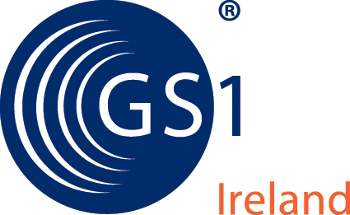
Denis O’Brien, director of standards and solutions, GS1 Ireland
Potentially one of the biggest technology impacts in retail in 2014 will be the continued growth in the use of consumer devices such as mobile phones and tablets. The biggest challenge for retail outlets will be to decide how best they can adopt and embrace the presence of all these devices in-store as well as at home, at work or on the move. It will be no small challenge for retailers to respond with valid in-store services and solutions that provide value to both the customer and retailer alike.
In terms of this interaction with consumers I see two possible enablers; firstly promotions and digital coupons and secondly consumer demand for detailed product information provided digitally.
In terms of hardware, I would expect to see increased retail demand for 2D image scanners which are capable of scanning mobile barcodes as well as new generation barcodes such as Data Matrix.

Denis O’Brien
Providing information on food origins
The Data Matrix barcode will become increasingly prevalent in the coming years as traceability, food origin and pedigree information is made available to consumers. Much of this data which needs to pass throughout the entire supply chain is being driven by new EU legislation, for example the 2009 and 2011 Fish Traceability Regulations and the 2011 Food Information Regulation. The availability of this data provides a great opportunity for brand owners and retailers to create apps that build both brand value and consumer engagement. A traceability framework called e-Locate.ie is currently being developed here in Ireland to facilitate the sharing of standardised supply chain and traceability data, which will support the creation of product data related services.
Finally, I would predict the increased prevalence of a barcode called GS1 DataBar in Irish stores in 2014. A number of pilots are currently underway which will become more visible to the trade and consumers as the year progresses. With GS1 DataBar retailers can better manage on-shelf availability, reduce the incidence of out-of-stocks, prevent the sale of expired or recalled product and in so doing contribute to a better shopper experience in-store. GS1 DataBar is also the symbol used for the new standards based Digital Coupon. The good news is that most retail scanners are already DataBar enabled and require no more than a simple software upgrade to process the additional data (e.g. expiry date or batch number) at the point of sale.
‘Every day a retailer doesn’t have self-serve checkout is costing the retailer money’
Conn Loy, Ioresource
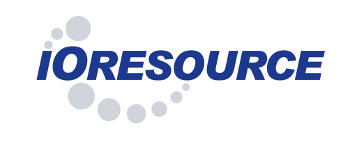
The retail technology sector has undergone more changes in the last 18 – 24 months than in the previous five years.
2D scanners, smart phones, solid state drives, multi-touch POS terminals, interactive digital signage, the first Android based POS terminals, cloud based POS solutions and SaaS have all arrived over a relatively short time span, and of course self-serve checkout (SSCO) has finally reached the tier two retail market.
The big development in 2014 will be the move to SSCO by a growing number of tier two retailers. Originally the domain of large tier one retailers, 2013 has witnessed SSCO start to move into tier two convenience store markets. The adoption by Scotmid (approximately 200 stores) of NCR SelfServ Checkout solutions is a major indicator of a trend towards SSCO within this competitive market.
Some of the more progressive retailers within the Irish retail community have already moved to adopt SSCO with the first Irish tier two install of NCR SelfServ Checkout solution commissioned in November 2013.

Conn Loy
The right time for adoption
So why is this happening now and what’s in it for the retailer? Well, it’s fair to say that the confluence of a number of factors has brought us to this point and as always the bottom line plays a big part.
On one hand it’s pretty much the "natural" evolution of retail technology. SSCO has been around for many years, the technology has evolved and honed down to a fine point, costs have come down and the business impact model has been refined and adapted to suit retail markets beyond the traditional tier one food giants.
Another key influencer is the ready acceptance and adoption of SSCO technology by consumers. Research shows that consumers not only expect to use SSCO as part of their shopping experience, they are more likely to do repeat business with a retailer that provides SSCO technology.
Keener focus on costs
Then there’s the economy and the challenges that it has brought over the last number of years particularly to retail. The result has been a keener focus on costs, customer service and business retention. SSCO delivers for the retailer on all fronts. Costs at the front end of the business are slashed as the labour cost is removed. Customer service and business efficiencies are improved as the retailer can redeploy staff to other in-aisle activities. Queue times are reduced by up to 40%, delivering a real enhancement to the customers’ in-store experience, and much more.
The key challenge for the retailer is in adapting their business model to suit this modern retail business footprint. SSCO isn’t just about installing a fancy cash register at the front end. It’s a whole new business process that revolutionises how a retail business is run. Progressive retailers know this and they’re buying into SSCO. The retailers that don’t will be at a significant competitive disadvantage, they will lose market share, revenues will decline and so will margin. The bottom line is, every day a retailer doesn’t have SSCO is costing the retailer money.
Learning about shopper browsing behaviour through mobile phone signal analysis

Owen Loughrey, CEO, MyStore Analytics
The retail industry is and must begin to understand its customers’ relationship with its stores beyond just sales data. There are many dynamics that happen before anyone even reaches the till and stores need to start looking at these, measuring them and seeing can they influence them to their benefit. When you think of a sale it involves a shopper coming in the door, spending time in the store browsing, and the more they do this the better. But how many retailers out there are currently measuring these metrics of how good they are at getting people in the door, how long their visitors spend in store or how often they visit, whether they purchase or not?
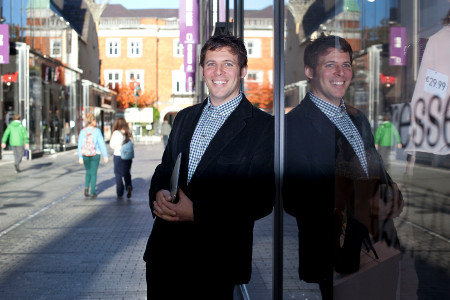
Owen Loughrey
I think 2014 will see retailers take more notice of these underlying factors that affect their sales. With more and more great technologies coming out that provide these insights, retailers will start looking for information that helps them understand their customers better. Retailers are starting to realise they need to understand how their stores themselves are performing relative to the environment around them.
Major learnings from browsing behaviour
If you look at offline retailers’ online counterparts, they use an abundance of information as to the browsing behaviour of their visitors whether they purchase or not. They analyse an array of metrics that help them establish how well they are doing at converting visitors into customers. They are essentially carrying out weekly website audits to see how they themselves are performing. But most offline stores have been focused up to now on ‘what are my sales?’
At MyStore Analytics we like to think of ourselves as an offline Google Analytics as we help stores learn about the browsing behaviour of their visitors through mobile phone signal analysis. We believe if you understand how they are browsing and can measure it well then you can look at influencing it. If you can influence it in your favour you will ultimately increase sales. It is a very simple premise and it works. We can see from talking to our existing clients and major retailers we are speaking to about joining us in 2014, that analysing visitor behaviour is moving up the priority list.
Loyalty programmes will help retailers retain their custom base
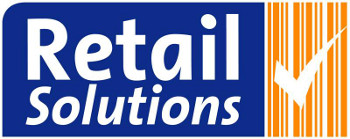
Seamus Quinn, technical director, Retail Solutions
While the trend towards online shopping will continue to grow in 2014, this is more applicable in medium to large retail operations. Convenience stores by their nature do not lend themselves particularly well to online and therefore I would expect them to concentrate on what they do well – customer service.
Whilst larger retailers are trying to sell to their customers without getting them into the store, I believe the key to the convenience retailer’s survival is to keep them coming back to the store, where they can "serve the customer". The main tool to assist in this will be a customer loyalty programme.

Seamus Quinn
Customer loyalty programmes have been around for quite a number of years but it is only in recent times that they have become the bastion of smaller retailers. The main reason for this is small retailers could not afford to analyse the data and therefore rewarding the customer with a point per euro spend was simply a discount. Nowadays a loyalty system suitable for a small retailer will have lots of built in analytics giving the retailer information on customer spends and visiting trends.
Communicating directly and offering rewards
The primary function of a customer loyalty programme is to drive customer retention; there are two key ways of doing this. The first is by using the information collected to communicate directly with them via a personalised text or email of offers that are specifically relevant to them. The second part of driving customer retention is by rewards. There are a number of different tools available through a modern loyalty scheme to allow a retailer to do this; the most common is by giving a point per euro spent back on purchases. However the retailer should also be able to run offers over a period of time e.g. Buy nine teas in a month and get the 10th tea free. The possibilities for this are almost endless, but it is all about getting the customer to come back.
One of the better loyalty systems on the market at the moment allows the customer to "save the change". This is a win for both the retailer and consumer. The retailer has to bank less coins and the consumer has to come back to the store to spend their savings; this in itself builds loyalty to the store.
It can be difficult for retailers to know all of their customers by name and simply having the customer’s name come up on the screen and being able to address the customer in person is a huge plus.
Through LolliPoints, every merchant can avail of loyalty schemes that were previously ‘territory of large multiples’
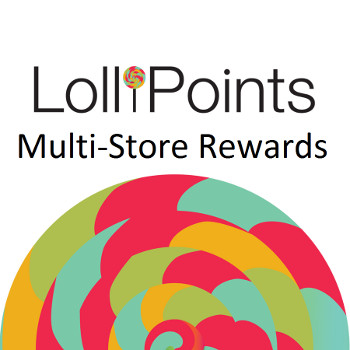
John Paul L’Estrange, managing director, Value Nation Ltd
The loyalty market has become very crowded and confused over the past five years with most retailers presenting their customers with some form of loyalty card. This creates problems for both the merchant and the consumer. Merchants expect the consumer to suddenly become a valued card carrying member of their club and to present their card every time they shop. The consumer would probably be willing to do this except that they have simply no space left in their wallet to carry the excessive number of cards being given to them. The merchant’s challenge is to win a place in their customer’s wallet. There are solutions available, like individual smart phone apps but they’re very costly to produce and the customer still has to download it. However, there is a new technology solution to this problem and it has come from Value Nation Ltd, the multi-store rewards provider and operator of LolliPoints.
Replacing stamp card with an electronic solution
LolliPoints’ customer engagement system allows numerous merchants to join the scheme while retaining their own individuality and redemption conditions.
This means coffee shops can replace their stamp card with an electronic solution that also rewards customers for important additional spend in-store. Points earned in a store can only be redeemed in that store or another outlet in that chain if required. This presents a solution for the consumer as they now only need to carry a single LolliPoints reward card or app to engage with the loyalty scheme of all their local merchants.
The system does not require POS integration or much administration and it provides merchants with a free analytical reporting system to help give constant information on the success of marketing initiatives. In addition the system allows customers to provide instant private feedback based on service, value and quality. This is now bringing the power of loyalty schemes that have been the territory of large multiples to every merchant and service provider throughout Ireland. Visit www.valuenation.com for further information.
Mobile payments will ‘take a central role for retailers’
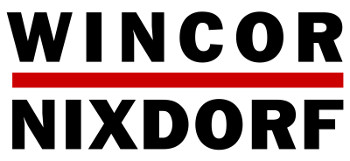
Martin Smethurst, MD, Retail UK and Ireland, Wincor Nixdorf
Mobile continues to be hailed as the next big thing for retail. From mobile payment to click and collect, the mobile revolution continues to allow customers to gather information and make payments faster and easier than ever before. 2014 will see the next step in the evolution of mobile from customer driven adoption to retailer adoption.
For retailers, the real power of mobile payments lies in allowing them to provide their customers with the level of choice and service they have come to expect. Retailers must be ready to embrace mobility as an essential part of their offering in-store, if they are to deliver an Amazon or eBay-like experience to customers. Mobile tools can empower employees too, enabling retailers to sell more of the most relevant products to the most receptive customers – improving service levels and margins.

Minister for Jobs, Enterprise and Innovation, Richard Bruton with Eamonn Dawson and John Paul L’Estrange from Value Nation
Clever retailers will embrace ‘show rooming’
This year, show rooming will continue to become a mainstream activity as customers across the generations research and compare price online, only coming in-store to experience the product’s look and feel. It would be natural for retailers to fear this phenomenon; however, clever retailers will embrace this trend. Clearly advertising free Wi-Fi in-store coupled with great service and knowledgeable staff can increase footfall, and ultimately the potential for sales. Tablets will increasingly be used by retailers as roaming POS. This will provide customers with detailed product information, the opportunity to browse online catalogues and how-to guides and importantly make a purchase at the point of decision rather than a main bank till.
While show rooming has already taken off with customers, the use of NFC to make payments has still not been fully embraced. According to Gartner, mobile payments currently total a £150bn market, but only 21% of these transactions are merchandise purchases rather than balance transfers. Retailers need to invest in education to help consumers break the credit card habit and confidently move to a mobile wallet future.
2013 was the year that purchasing from mobile and tablets became mainstream. During 2014 we expect to see mobile take a central role for retailers, becoming a key sales tool both in-store and elsewhere. Looking forward, customers’ demand for the ‘internet of things’ will revolutionise shopping experiences, as mobile and computers collide. Pointing our smartphones at an advert on TV and ordering the suit being advertised will no doubt become reality.



 Print
Print






Fans 0
Followers